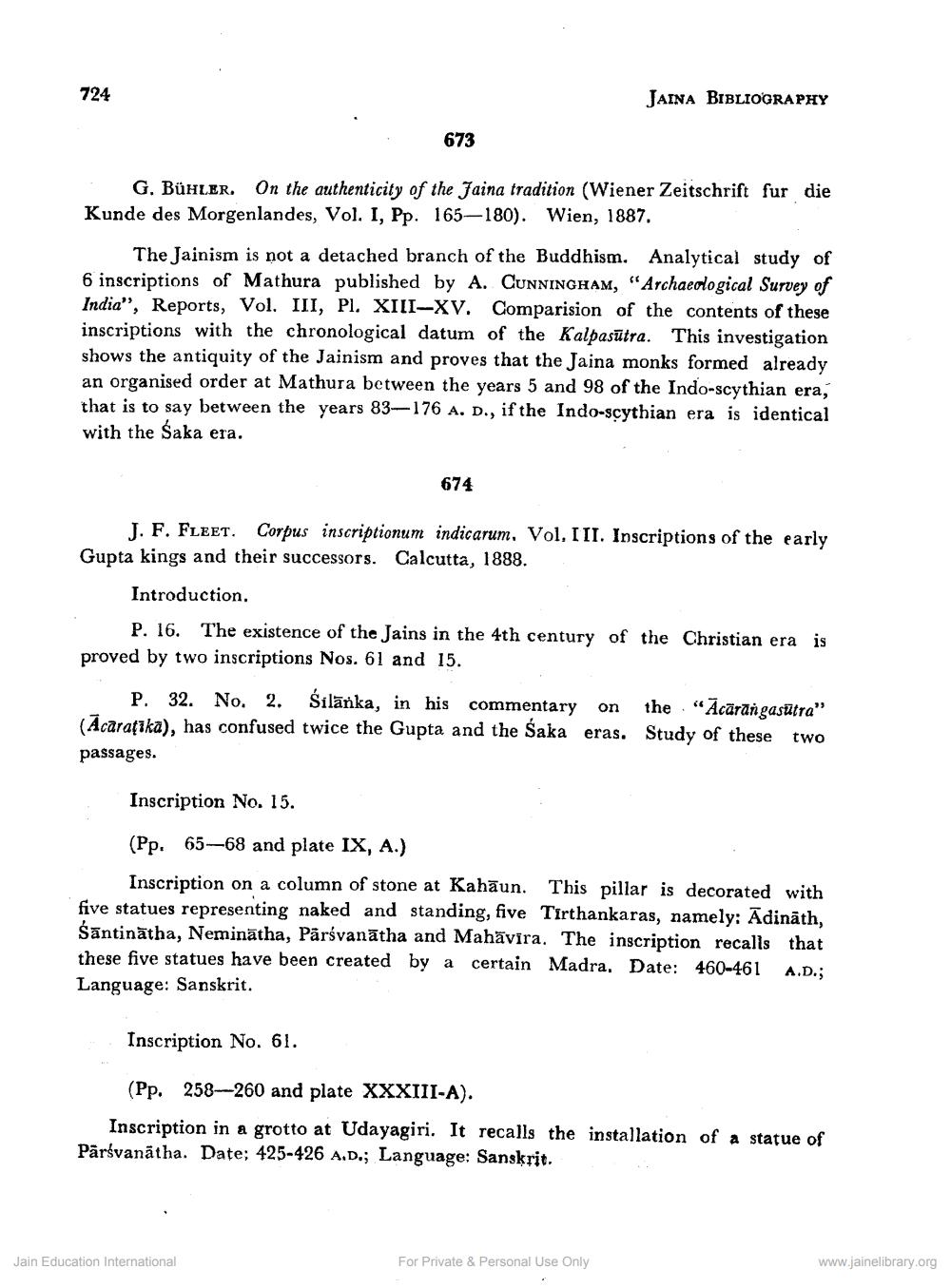________________
724
JAINA BIBLIOGRAPHY
673
G. BÜHLER. On the authenticity of the Jaina tradition (Wiener Zeitschrift fur die Kunde des Morgenlandes, Vol. I, Pp. 165-180). Wien, 1887.
The Jainism is not a detached branch of the Buddhism. Analytical study of 6 inscriptions of Mathura published by A. CUNNINGHAM, "Archaeological Survey of India”, Reports, Vol. III, Pl. XIII-XV. Comparision of the contents of these inscriptions with the chronological datum of the Kalpasūtra. This investigation shows the antiquity of the Jainism and proves that the Jaina monks formed already an organised order at Mathura between the years 5 and 98 of the Indo-scythian era, that is to say between the years 83—176 A. D., if the Indo-scythian era is identical with the Saka era.
674
J. F. FLEET. Corpus inscriptionum indicarum. Vol. III. Inscriptions of the early Gupta kings and their successors. Calcutta, 1888.
Introduction.
P. 16. The existence of the Jains in the 4th century of the Christian era is proved by two inscriptions Nos. 61 and 15.
P. 32. No. 2. Silānka, in his commentary on the "Acärängasutra" (Acaraţika), has confused twice the Gupta and the Saka eras. Study of these two passages.
Inscription No. 15.
(Pp. 65-68 and plate IX, A.)
Inscription on a column of stone at Kahāun. This pillar is decorated with five statues representing naked and standing, five Tirthankaras, namely: Ādināth, śāntinātha, Neminātha, Pārsvanātha and Mahävira. The inscription recalls that these five statues have been created by a certain Madra. Date: 460-461 A.D.; Language: Sanskrit.
Inscription No. 61.
(Pp. 258--260 and plate XXXIII-A).
Inscription in a grotto at Udayagiri. It recalls the installation of a statue of Pārsvanātha. Date: 425-426 A.D.; Language: Sanskrit.
For Private & Personal Use Only
Jain Education International
www.jainelibrary.org




